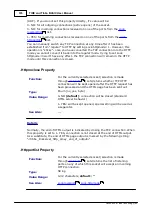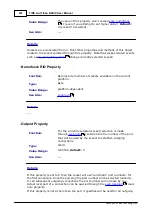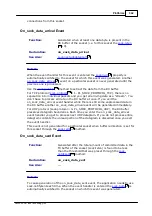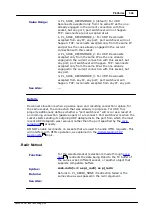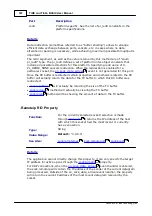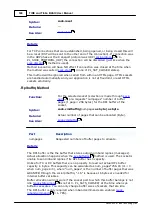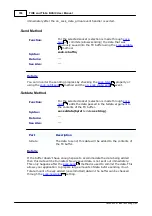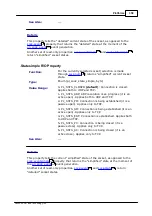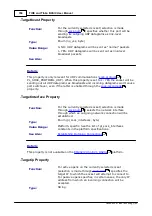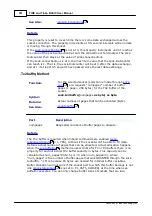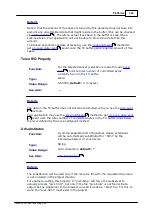
349
TIDE and Tibbo BASIC User Manual
©2000-2008 Tibbo Technology Inc.
Syntax:
sock.reset
Returns:
---
See Also:
Details
For TCP connections that were established, being opened, or being closed this will
be a reset (RST will be sent to the other end of the connection). If connection was
in the ARP phase or the transport protocol was UDP (
= 0-
PL_SOCK_PROTOCOL_UDP) the connection will be discarded (just like when the
method is used).
Method invocation will have NO effect if connection was closed at the time when
the method was called (
in one of PL_SST_CLOSED states).
This method will be ignored when called from within an HTML page. HTML sockets
are handled automatically and your application is not at freedom to reset HTML
sockets arbitrarily.
.Rplbuffrq Method
Function:
For the selected socket (selection is made through
) pre-requests "numpages" number of buffer
pages (1 page= 256 bytes) for the RPL buffer of the
socket.
Syntax:
sock.cmdbuffrq(numpages as byte) as byte
Returns:
Actual number of pages that can be allocated (Byte).
See Also:
Part
Description
numpages
Requested numbers of buffer pages to allocate.
Details
The RPL buffer is the the buffer that stores outgoing inband replies (messages).
Actual allocation happens when the
method is used. The socket is
unable to send inband replies if its RPL buffer has 0 capacity.
Unlike for TX or RX buffers there is no property to read out actual RPL buffer
capacity in bytes. This capacity can be calculated as num_pages*256-16 (or =0
when num_pages=0), where "num_pages" is the number of buffer pages that was
GRANTED through the sock.rplbuffrq. "-16" is because 16 bytes are needed for
internal buffer variables.
Buffer allocation will not work if the socket port to which this buffer belongs is not
idle (
is not at 0- PL_SSTS_CLOSED) at the time when sys.
buffalloc executes. You can only change buffer sizes of sockets that are idle.
The RPL buffer is only required when inband commands are enabled (
= 1- YES).
328
345
331
355
340
329
217
358
337

